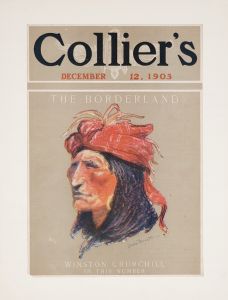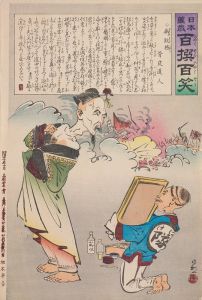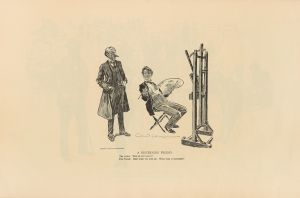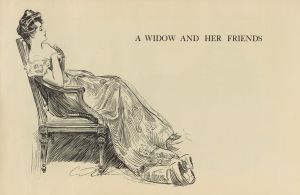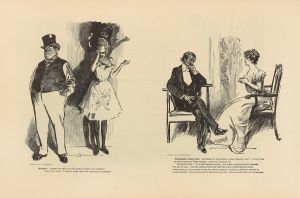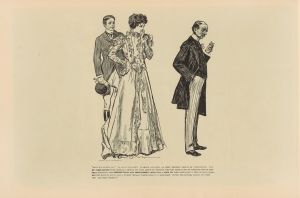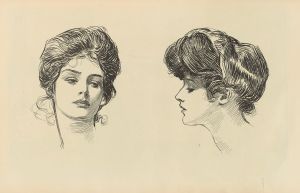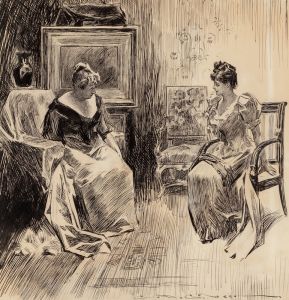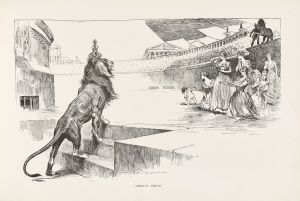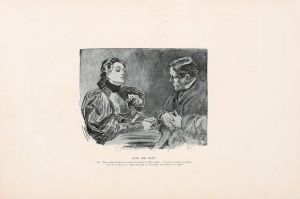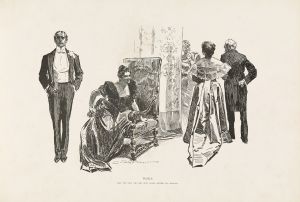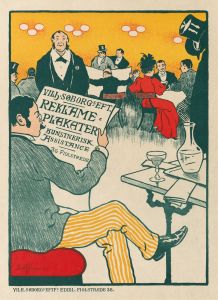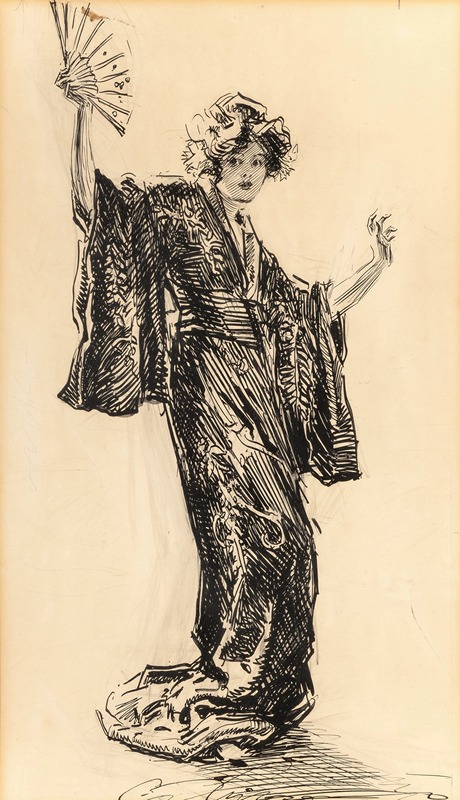
Japonette
A hand-painted replica of Charles Dana Gibson’s masterpiece Japonette, meticulously crafted by professional artists to capture the true essence of the original. Each piece is created with museum-quality canvas and rare mineral pigments, carefully painted by experienced artists with delicate brushstrokes and rich, layered colors to perfectly recreate the texture of the original artwork. Unlike machine-printed reproductions, this hand-painted version brings the painting to life, infused with the artist’s emotions and skill in every stroke. Whether for personal collection or home decoration, it instantly elevates the artistic atmosphere of any space.
Charles Dana Gibson was an influential American illustrator best known for creating the iconic "Gibson Girl," a representation of the idealized American woman at the turn of the 20th century. Among his many works, "Japonette" is one of the illustrations that showcases his distinctive style and cultural observations.
"Japonette" is a black-and-white illustration that reflects Gibson's interest in the Japonism movement, which was the Western fascination with Japanese art and culture during the late 19th and early 20th centuries. This movement influenced many artists and designers in Europe and America, leading to the incorporation of Japanese aesthetics into Western art.
The illustration depicts a young woman, presumably of Japanese descent, dressed in a kimono, which was a traditional Japanese garment. The kimono is intricately detailed, showcasing Gibson's skill in rendering textures and patterns with pen and ink. The woman is portrayed with an elegant posture, embodying the grace and poise often associated with the Gibson Girl, yet with distinct Japanese elements that highlight the cultural fusion present in the artwork.
Gibson's work often commented on societal norms and cultural trends, and "Japonette" can be seen as a reflection of the Western world's fascination with and romanticization of the East during this period. The Japonism movement was characterized by an appreciation for Japanese art forms, such as woodblock prints, ceramics, and textiles, which were seen as exotic and novel by Western audiences. This movement significantly influenced Western art, leading to new approaches in design and aesthetics.
In "Japonette," Gibson captures this cultural exchange by blending his signature style with elements of Japanese art. The illustration may also reflect the broader themes of globalization and cultural interaction that were becoming increasingly prominent at the time. By incorporating Japanese motifs into his work, Gibson was participating in a larger artistic dialogue that sought to explore and integrate diverse cultural influences.
Charles Dana Gibson's illustrations were widely published in magazines such as "Life" and "Harper's Weekly," reaching a broad audience and shaping public perceptions of beauty and culture. His work, including "Japonette," played a role in popularizing the Gibson Girl as a symbol of modern femininity, while also engaging with contemporary artistic movements like Japonism.
While "Japonette" is not as widely recognized as some of Gibson's other works, it remains an interesting example of how Western artists of the time engaged with and interpreted Japanese culture. It serves as a testament to the cross-cultural exchanges that were occurring in the art world during the late 19th and early 20th centuries, highlighting the dynamic interplay between Western and Eastern artistic traditions.
Overall, "Japonette" by Charles Dana Gibson is a notable illustration that exemplifies the influence of Japonism on Western art and the artist's ability to capture the spirit of his time through his distinctive style and cultural commentary.





